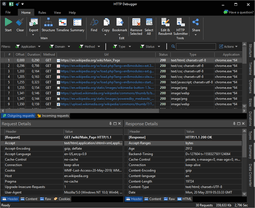Overview of HTTP Response Codes and Structure
HTTP messages are simple, formatted blocks of data. Each message contains either a request from a client or a response from a server.
They consist of three parts: a start line describing the message, a block of headers containing attributes, and an optional body containing data.
The HTTP response is the reply from a web server to the web browser's request to fetch and transmit the requested web page, image, script and other in the HTTP response.
The HTTP response normally consists of a Status-Line, one or more header parameters, a blank line, and optionally from a content received in the HTTP response.
The first line of a Response message is the Status-Line, consisting of three items:
These header fields provide a wide range of information such as HTTP version, server platform, content encoding and length, cookies, error codes, and more, returned in the HTTP response.
The requested HTML web pages, images, scripts, etc are returned in the HTTP response.
They consist of three parts: a start line describing the message, a block of headers containing attributes, and an optional body containing data.
The HTTP response is the reply from a web server to the web browser's request to fetch and transmit the requested web page, image, script and other in the HTTP response.
The HTTP response normally consists of a Status-Line, one or more header parameters, a blank line, and optionally from a content received in the HTTP response.
The first line of a Response message is the Status-Line, consisting of three items:
- The HTTP version number, showing the HTTP specification to which the server has tried to make the message comply.
- A status code, which is a three-digit number indicating the result of the request.
- A reason phrase, also known as status text, which is human-readable text that summarizes the meaning of the status code.
These header fields provide a wide range of information such as HTTP version, server platform, content encoding and length, cookies, error codes, and more, returned in the HTTP response.
The requested HTML web pages, images, scripts, etc are returned in the HTTP response.
Copyright Notice: Please don't copy or translate this article without prior written permission
from the HTTPDebugger.com
HTTP Debugger is a proxy-less HTTP analyzer for developers that provides the ability to capture and analyze HTTP headers,
cookies, POST params, HTTP content and CORS headers from any browser or desktop application.
Awesome UI and very easy to use. Not a proxy, no network issues!
Download FREE 7-Day Trial
HTTP Debugger
 Debug HTTP API calls to a back-end and between back-ends.
Very easy to use.
Not a proxy, no network issues!
Download Free Trial
Debug HTTP API calls to a back-end and between back-ends.
Very easy to use.
Not a proxy, no network issues!
Download Free Trial



